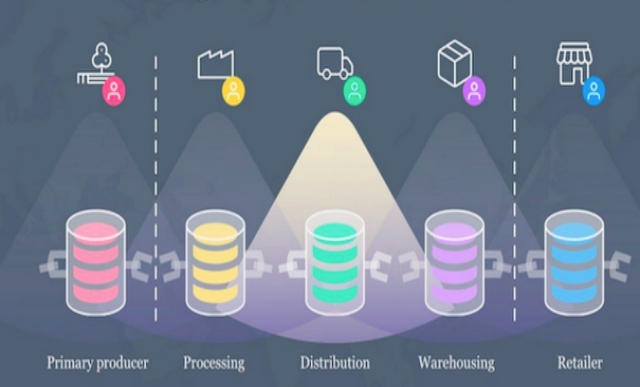When supply chains were disrupted due to the SARS epidemic in China almost two decades ago, there was a lot of buzz around supply chain resiliency and agility. Companies promised to leverage digital tools and technologies to “transform” their supply chains. Technology evolved exponentially in the next two decades. When implemented correctly, organizations had access to tools and technologies to help them build supply chain resiliency and agility.
Then the world faced the Black Swan event of the COVID pandemic!
And organizations ran into the same kind of issues that they ran into during the SARS epidemic. Again, there was a huge cry around “digital transformation”, memes highlighting that the pandemic has accelerated digital transformation in organizations, executives highlighting what the issue was and how technology could have helped, and in some cases, executives highlighting how they were able to leverage a specific technology to alleviate supply chain issues due to the pandemic and build supply chain resiliency. Building supply chain resiliency and agility have emerged as top drivers in all of our recent supply chain research, including
Supply Chain Planning in The Cloud.
But even after three years since the advent of the pandemic, supply chain issues linger. And some of them are not the result of the pandemic. You are hearing about them more often because of the focus on supply chains post-pandemic. A good example is children’s Tylenol missing from the shelves during the current flu season. The problem's root cause is a spike in demand that can not be met with production capacity. While it is perfectly acceptable for many other products, healthcare products should not fall in this "acceptable" category.
Flu season is very predictable across America. There may have been a worse wave this year than in previous years, and terms like "
tripledemic" are being thrown around to highlight the excessive demand. But if a flu spike causes a shortage of essential medicines, like a fever reducer, in a country like The United States of America, it needs to be analyzed, no matter how "unusual" the demand pattern is. And at the core of the problem, in my opinion, is the lack of structured collaboration between the government and healthcare companies.
The secret behind America’s success lies in the foundation of capitalism. The autonomy that businesses have in this country has led not only to the prosperity of the masses but a treasure ton of innovation. However, an aspect of great nations is also that they tweak their models as things change and the world evolves around them. For critical supply chains, like healthcare, which define a prosperous nation's fundamental quality of living, the U.S. government can help healthcare companies deal with issues like the one they are currently running into.
What is needed is not government interference but support. When one of the most powerful democratic government systems and the most powerful healthcare companies in the world strategize and execute in tandem, there is no problem that can not be solved.
As businesses, healthcare companies are consistently under pressure to avoid excess inventory and waste in their supply chain. It is the concept of this lean inventory management practice that leads to shortages in times of sudden spikes of demand. While the lack of product on shelves for some spikes like toilet paper is manageable, medicines are a different category altogether. And this is where there needs to be a sub-policy under the national supply chain policy. This is where learnings from the pandemic experience need to be leveraged beyond the toilet paper shortages.
The U.S. government needs to step in, to safeguard supply chains that are critical to the well-being of U.S. population and help healthcare companies manage the crisis better. At a high level, here is how a process can be established:
Step 1: Build a list of prescription and OTC medicines consumed the most across the U.S. Add some strategic formulations to this list that may be needed if some unexpected outbreak happens.
Step 2: Prepare a list of all manufacturers and distributors of these products. Understand their supply chain and specifically how they manage inventory.
Step 3: In a centralized hub, build consolidated simulation models to understand the average inventory requirements for spikes and crises.
Step 4: Socialize results with manufacturers and understand their maximum inventory holding constraints.
Step 5: Quantify the delta (Simulation model suggested maximum and what manufacturers can carry usually). Explore the demographics of this delta (which regions will need what quantities in case of waves, epidemics, and pandemics)
Step 6: Based on the combined data of all medicines, build a network model to determine a warehousing network to hold the delta quantities.
Step 7: Build the network and hold these delta quantities in those hubs. The U.S. government takes ownership of the inventory. Note that associated information and distribution system networks must also be in place. This can be a single, robust network that supports critical healthcare supply chains and many other supply chains critical to the strategic interest of America.
Step 8: Develop a distribution plan. Again, build network and simulation models to get products to store in cases of spikes in demand. Retails will pay for transportation.
Having such a network and processes in place can also be helpful in scenarios where a rival nation may try to disrupt America's supply chain due to America's manufacturing dependency on them. This will ensure that a minimum supply of essential healthcare medicines is nationally and strategically available in times of war and crisis.
While these steps may seem simple, the overall process, if implemented effectively, will work robustly. Hopefully, a large portion of this strategic inventory will go waste due to shelf life (i.e, we will not run into crises). However, this will be a drop in the bucket in the grand scheme of things and the U.S. government's spending budget. But it will ensure that the quality of life and healthcare safety that makes people from all over the world flock to the U.S. remains at its pinnacle.









